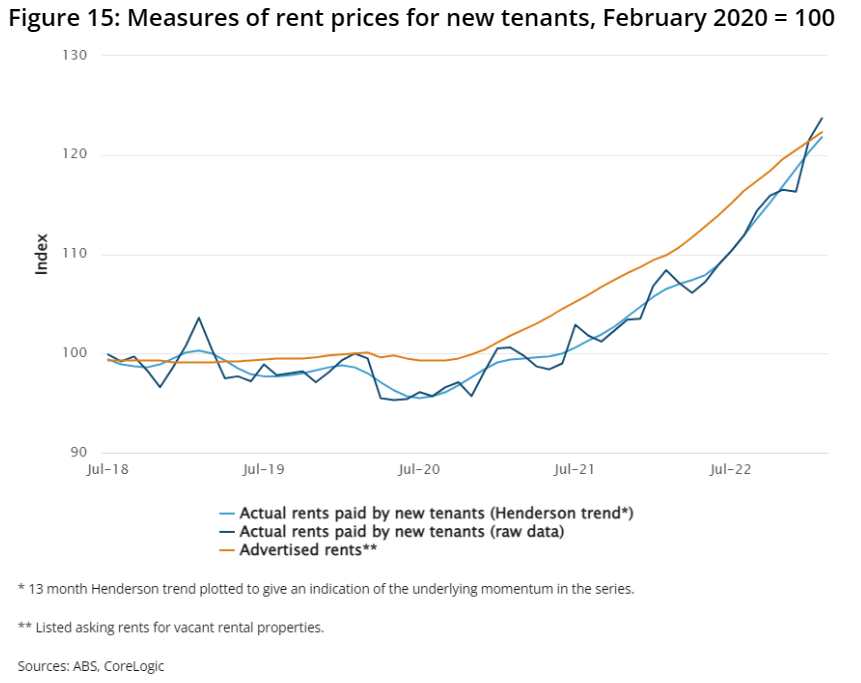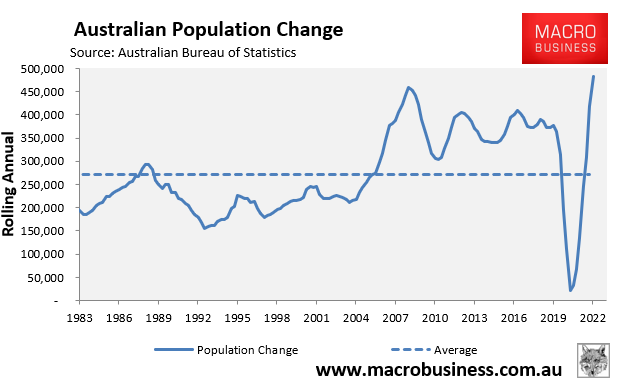Wednesday’s monthly inflation indicator from the Australian Bureau of Statistics (ABS) showed that Australian capital city rents rose by 5.3% in the year to March, which was the strongest rate of growth since September 2009:

On Monday, the ABS also published a report entitled “New insights into the rental market”, which showed that advertised rents (as published by CoreLogic) began rising around one year earlier and have risen by far more than CPI Rents (as measured by the ABS):

“The rents paid by new tenants provide a leading indication of price developments in the total stock of rental properties”, the ABS notes.
“Actual rents paid by new tenants increased by 14% over the year to February 2023, which is 9 percentage points higher than the increase in the monthly CPI indicator rent index (which measures all rents, not just those paid by new tenants)”.
“Since the onset of the pandemic in 2020, rents paid by new tenants have increased by 24% and the CoreLogic advertised rent series has increased by 22% (Figure 15)”:

“If vacancy rates remain low, then stronger-than-normal increases in advertised rents are likely to persist”.
“This will impact the CPI both directly, given that these properties are included in the calculations, and indirectly as increases in market rents influence landlords’ price-setting behaviour in the rest of the rental market”, the ABS concludes.
Rents comprise nearly 6% of the CPI basket, which will likely increase when the ABS reweights the Index.
Given there is a circa 20% gap between CoreLogic’s advertised rent index and CPI Rents (see first chart above), alongside a lag of at least 12 months between the two series, rents could add around 1% alone to Australia’s CPI over the next year.
This is likely a conservative estimate given Australia’s population (rental demand) is growing at an unprecedented pace on the back of record net overseas migration, which will continue to tighten the rental market:

The Albanese Government’s extreme immigration policy is now working against renters, mortgage holders, and the RBA’s efforts to lower inflation.

